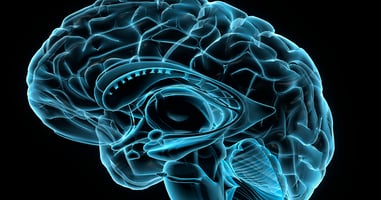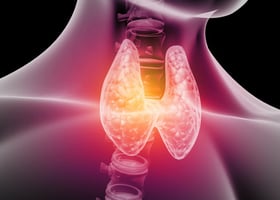Deep brain stimulation (DBS) of a region called the subcallosal cingulate appears to be safe and...
Patients With Treatment-Resistant OCD Found to Improve After Deep Brain Stimulation
 |
In the open study of 70 OCD patients who received DBS of a region called the ventral anterior limb of the internal capsule (vALIC), Damiaan Denys, M.D., Ph.D., of the University of Amsterdam and colleagues found that during the first year following the procedure, patients on average experienced significant improvements in symptoms of OCD, anxiety, and depression. The findings support the results of a DBS trial involving 16 OCD patients reported in 2010, the authors noted.
Although pharmacotherapy and cognitive-behavioral therapy (CBT) have been shown to benefit many patients with OCD, 10% of patients experience treatment-resistant OCD, Damiaan Denys, M.D., Ph.D., of the University of Amsterdam and colleagues wrote. DBS uses electrical pulses from implanted electrodes to regulate activity in specific regions of the brain.
To be included in the trial, patients had to have a primary diagnosis of OCD and a five-year history of OCD. The patients also had a history of “no or insufficient response” to multiple treatments, including two selective serotonin reuptake inhibitors (SSRIs) at maximum dosages, at least one attempt at augmenting SSRIs with an atypical antipsychotic, and CBT, the authors wrote. DBS electrodes were implanted bilaterally into the vALIC of all patients included in the trial, and two weeks after surgery, DBS was activated.
The researchers assessed the patients’ responses to DBS every two weeks to optimize the treatment, such as adjusting the voltage of the electrodes or contact point configurations. They used the Yale-Brown Obsessive Compulsive Scale (Y-BOCS) to assess OCD symptoms before DBS surgery, two weeks after the DBS implantation, monthly up to six months after surgery, and at a follow-up at 12 months. The researchers also assessed anxiety symptoms in the patients using the Hamilton Anxiety Rating Scale (HAM-A) and depression symptoms using the Hamilton Depression Rating Scale (HAM-D). The patients were asked about side effects at each visit.
The authors reported that from baseline to follow-up at 12-months, the patients’ mean Y-BOCS score decreased by 40%. Over this same period, the mean HAM-A score decreased by 55%, and the mean HAM-D scores decreased by 54%.
The researchers categorized the patients as responders if they experienced a ≥35% decrease in scores on the Y-BOCS; partial responders if the Y-BOCS score decreased between 25% and 34%; and nonresponders if the Y-BOCS score decreased less than 25%. At 12 months, 52% of the patients met the criteria for responders; 17%, partial responders; and 31%, nonresponders. The most common side effects reported by patients included hypomania, agitation, impulsivity, and sleeping disorders, but most of these symptoms resolved within weeks, the authors wrote.
“Our study confirms our previous finding that DBS of the vALIC is an effective and tolerable treatment for refractory OCD,” Denys and colleagues concluded. “Investigating predictors of success could improve DBS selection …,” they added.
For related information, see the chapter “Brain Stimulation Treatments for Mood Disorders” in Gabbard’s Treatments of Psychiatric Disorders.
(Image: SvedOliver/Shutterstock)
Follow Psychiatric News on Twitter!
And check out the new Psychiatric News Brief on Alexa-enabled devices.
And check out the new Psychiatric News Brief on Alexa-enabled devices.





